Does the ‘Notorious RBG’ Exhibit Go Beyond Ruth Bader Ginsburg Hero Worship?
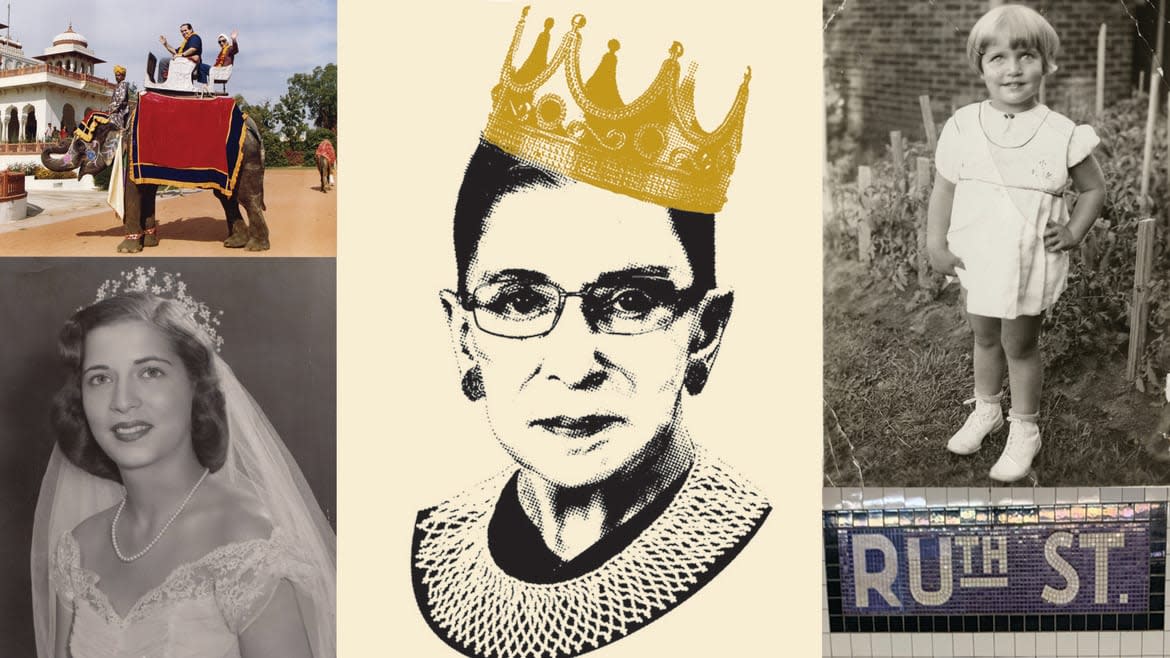
- Oops!Something went wrong.Please try again later.
- Oops!Something went wrong.Please try again later.
What more can institutions do to pay tribute to Ruth Bader Ginsburg, the iconic Supreme Court justice who died last year at the age of 87? In the city of her birth, New York mayor Bill de Blasio announced the renaming of Brooklyn Borough Hall in her honor. Her childhood home in Midwood became a pop-up memorial, with many leaving flowers and notes of appreciation on the doorstep on the anniversary of her death.
Her image blazed across social media, especially in light of Texas’s abortion ban, which the Supreme Court declined to hear in August. We remember her, even as the civil rights she dedicated her life to protecting begin to erode before our eyes.
How Ruth Bader Ginsburg Defined America as a Work in Progress
So what can the New York Historical Society reveal that is new and insightful with its exhibit, Notorious RBG: The Life and Times of Ruth Bader Ginsburg? The show, which is open until Jan 23, 2022, and is based on the 2015 book by Irin Carmon and Shana Knizhnik, certainly succeeds at celebrating the justice’s life, paying particular attention to the supporting characters who filled it.
Sure, there is hero worship. This is probably inevitable for any exhibit based on her life. So visitors must put up with some cringe-y touches, like the entrance portrait which features a gold crown superimposed, slightly askew, on RBG’s head, to mimic the iconic photo originally taken of the Notorious B.I.G. in March 1997. Of course, Ginsburg never asked for what Jennifer Schuessler of The New York Times dubbed the popular feminist “tote-bag version of RBG fandom.”
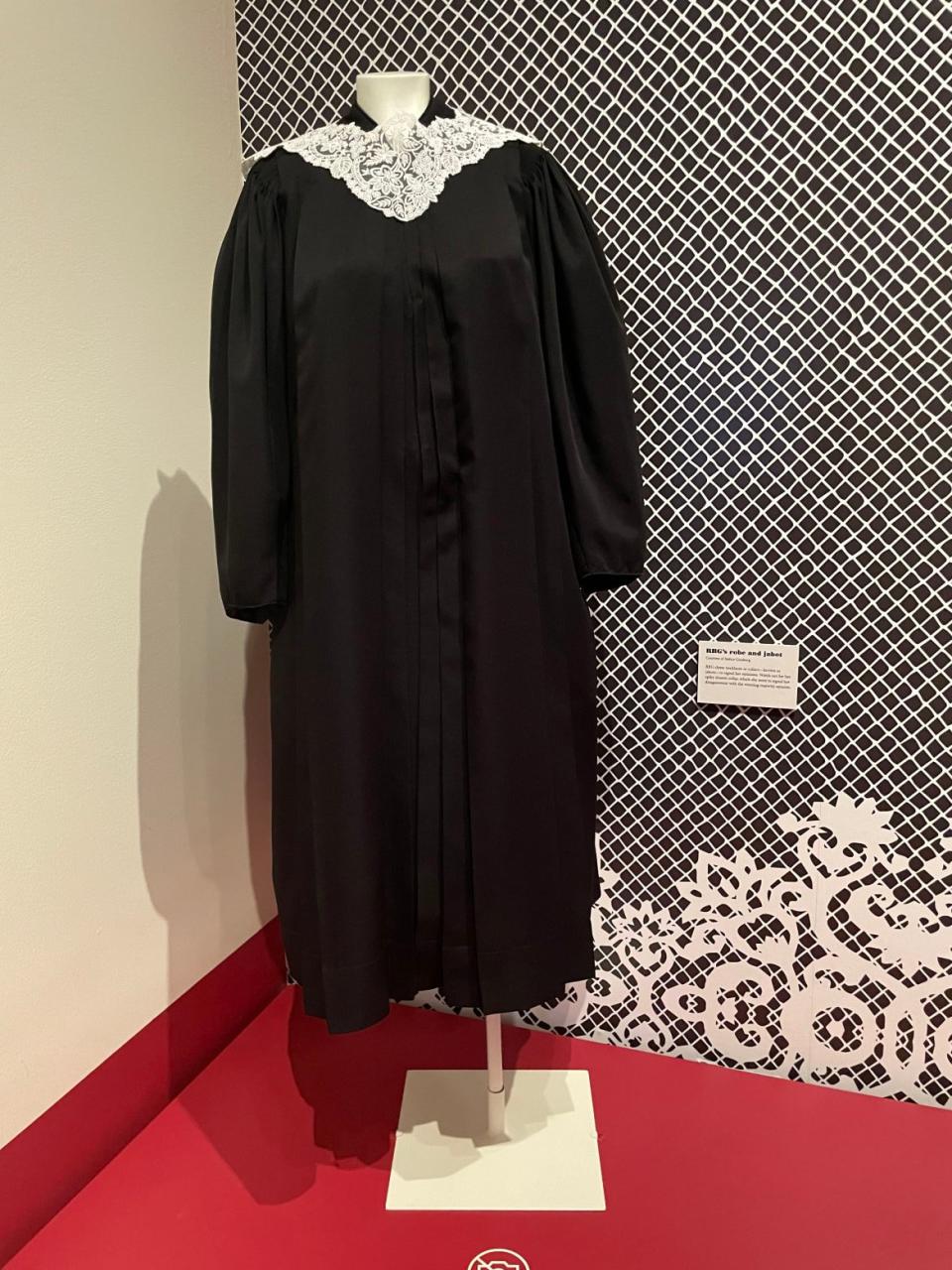
One of Justice Ruth Bader Ginsburg's robes.
This exhibit certainly toasts the gestural art that epitomizes liberal-mania and this country’s tendency to turn political figures into icons of pop culture. Visitors to the museum are encouraged to take selfies in front of a Supreme Court backdrop holding quote bubbles of RBG’s famous phrases, and are instructed on how to “Dress Like Ruth” just in time for Halloween.
During the first weekend after the exhibit’s opening, most of the visitors could be described as white female boomers—the type of women who might feel a more stirring connection to Ginsburg’s influence. This exhibit is for them. But it also could serve anyone looking to know a little bit more about history and context. That is, if they haven’t already learned it from the multiple films and books that already exist out there cataloguing an extraordinary life.
There are few artifacts that actually belonged to RBG present in the collection, but visitors are greeted with a whammy of an intro upon entering the exhibit: her black robe, complete with one of the many ornate jabots she wore, which were dubbed her “dissent collars.” The outfit is propped on a mannequin that mimics her demure 5-foot-1-inch frame. The impact is immediate—we all know RBG was tiny, but it’s a chance to really see for ourselves. I found myself backtracking multiple times to revisit this piece.
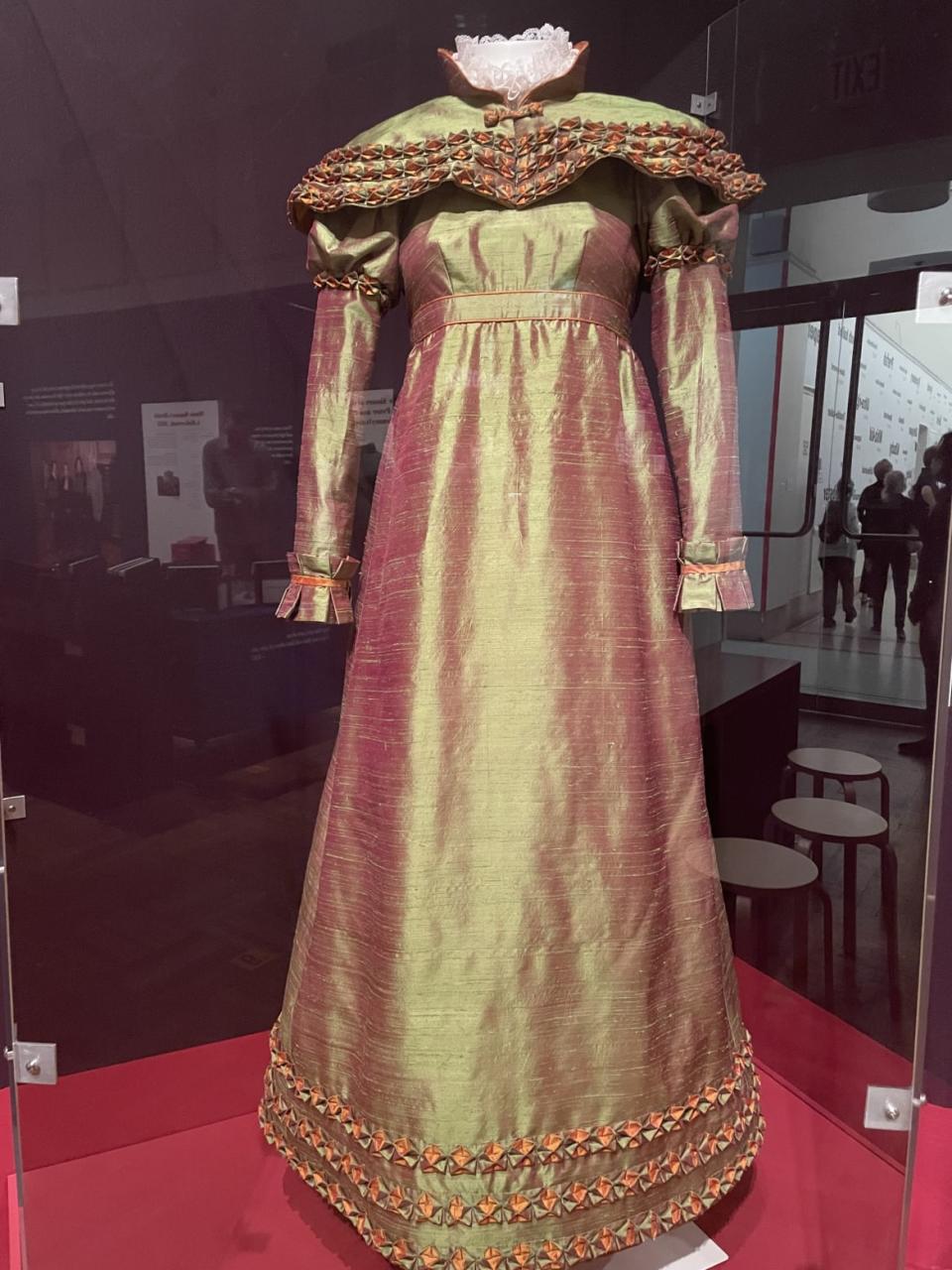
The costume RBG wore for her 2016 performance in the Washington National Opera.
Another, different type of costume stands out too: the frilly chartreuse gown Ginsburg wore while performing in the Washington National Opera’s production of Donizetti’s The Daughter of the Regiment, a non-singing but speaking role RBG wrote the dialogue for during a 2016 appearance. (Amy Coney Barrett could never.) The dress tells many stories: namely, RBG’s love of the opera, but also her sense of fun and adventure.
It was that spunk which, of course, set Ginsburg down her path to law school and, eventually, the Supreme Court. Through replica sets of her childhood living room, yearbooks, and archival prints, visitors can trace her precocious childhood. We meet her mother, Celia Bader, who tragically died the day before RBG’s high school graduation, where she was set to be valedictorian. (The teenager never gave her speech, as she stayed home to support her father.)
While speaking after Bill Clinton’s nomination of her to the Supreme Court, Ginsburg would say of her mother, “I pray that I may be all that she would have been, had she lived in an age when women could aspire and achieve, and daughters are cherished as much as sons.” A video of that speech plays on a loop in the exhibit. In it, Ginsburg also mentions her daughter, Jane, whose high school yearbook’s “ambition” was listed as “to see her mother appointed to the Supreme Court. If necessary, Jane will appoint her.” (Jane C. Ginsburg is now a professor of law at Columbia.)
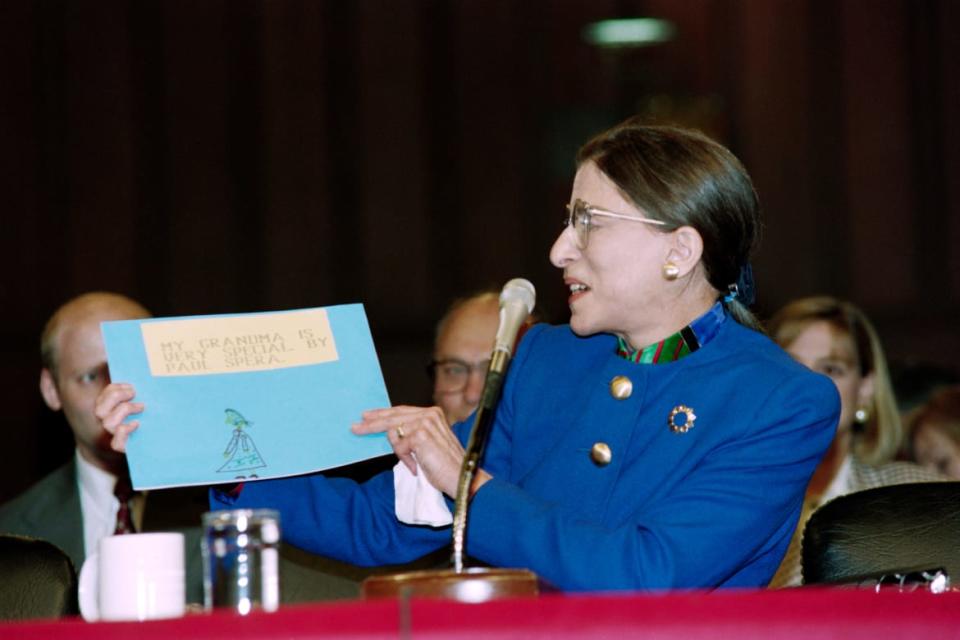
Ruth Bader Ginsburg holds up her grandson Paul Spera's book, titled "My Grandma Is Very Special," during her Senate confirmation hearings in 1993.
Special attention is paid to RBG’s 56-year-long love story with Martin Ginsburg, as it should be. The exhibit highlights their equal commitment to each other and their children. Home videos taken by RBG provide a bit of levity to the exhibit. So does this RBG quote, which is blazed on a museum wall: “For most girls growing up in the ’40s, the most important degree was not your B.A., but your M.R.S.”
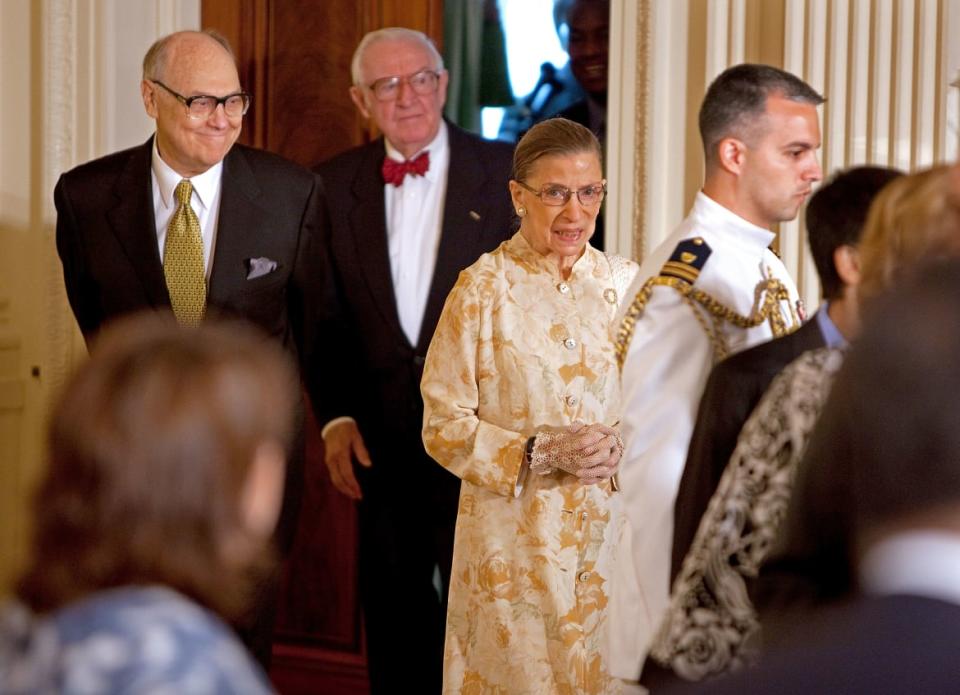
RBG and her husband, Martin D. Ginsburg, during a welcome reception for Justice Sonia Sotomayor in 2009.
And then there are the many people who supported RBG during her career who get shout-outs along the way. One, Pauli Murray, stands out—so much that you wonder why you’re not walking through a museum wing dedicated to their legacy. The civil rights activist and lawyer, who co-founded the National Organization for Women, was listed by RBG as a coauthor of a brief in 1971. A Cliff notes version of Murray’s work targeting gender and racial discrimination, plus her life as an openly gender non-conforming and queer person in the mid-20th century. I suspect many visitors would love to know more after reading what’s there.
Some of the interpersonal dynamics between justices are discussed, too, but there’s little drama. Sandra Day O’Connor suggested that Ginsburg wear gloves in 1999, when she was recovering from chemotherapy after colon cancer. Ginsburg remembered O’Connor telling her, “You are vulnerable now, and you’re going to receptions and shaking hands with lots of people, so you should at least wear gloves.” She liked the look, so she continued to wear fishnet gloves for the rest of her career.
The exhibit notes Ginsburg’s friendly relationship with Justice Anton Scalia, one of the most influential conservative jurists of all time who did not believe people have a constitutional right to abortion. They would attend the opera together and had dinner every New Year’s Eve. Some might take comfort in the folksy way their unlikely rapport is covered in this exhibit, others whose brains have been ruined by both sides-ism might roll their eyes.
So do not come to the exhibit if you’re expecting any thoughtful analysis on RBG’s missteps—like the time she called San Francisco 49ers quarterback Colin Kaepernick’s protest of taking a knee during the national anthem “really dumb,” “offensive,” and “disrespectful.” (Ginsburg later apologized, saying her words were “inappropriately dismissive and harsh.”)
You will find no arguments that she should have retired during Obama’s term, so he could have picked a liberal successor. There is no mention of the train wreck that was Brett Kavanaugh’s Supreme Court hearing. The feminist cult of RBG, which of course this exhibit is marketed towards, are not invited to reflect on their idolatry in a circumspect way.
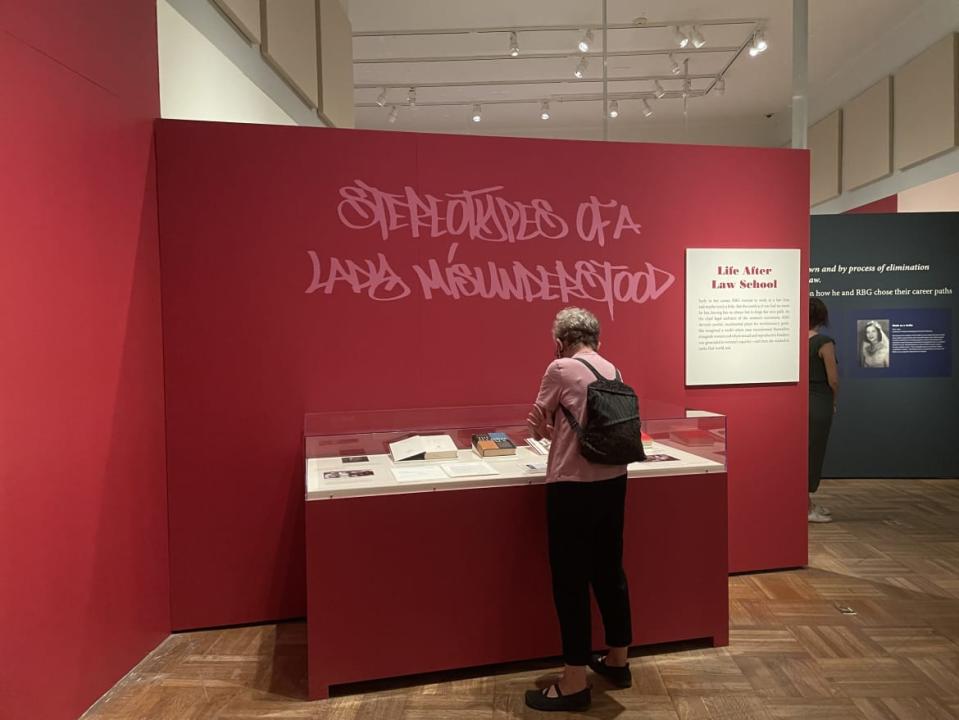
A view of the exhibit.
Oh, also: Biggie lyrics are stamped upon the wall during crucial junctures of the exhibit in a tired “graffiti-looking” font. One, from “Juicy,” reads “Stereotypes of a lady misunderstood.” The original line, of course, is “Stereotypes of a Black male misunderstood.” This does not do any favors in dispelling the “white feminists love RBG” school of thought.
A smaller point: RBG’s famous dumbbells, which she used during her surprisingly intense sessions with longtime personal trainer Bryant Johnson, who she called the “most important person” in her life back in 2010. (Johnson did push-ups in front of RBG’s casket as it lay in the Capitol’s Statuary Hall.) Those would have been a nice addition.
Get our top stories in your inbox every day. Sign up now!
Daily Beast Membership: Beast Inside goes deeper on the stories that matter to you. Learn more.

